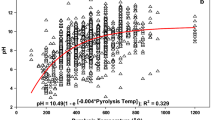Abstract
Wood from three tree species was used for making slow-releasing woodchip fertilizer. Fertilizer made from Populus tomentiglandulosa retained the highest amounts of N (29.04%), P2O5 (26.03%) and K2O (16.93%). On the other hand, woodchip fertilizer made from Pinus koraiensis retained the lowest amounts of N (26.22%), P2O5 (21.80%) and K2O (14.49%). A field experiment was performed in a 50 m2 experimental plot at Gangwon Agricultural Research and Extension Services, Chuncheon, Korea from August to November 1999. The effects of a general fertilizer along with compost and slow releasing woodchip fertilizer without compost on the cabbage production were observed. Cabbage production parameters, such as top height, head weight, head height, head width, number of outer and inner leaves, leaf width and head length, increased in the field where Larix kaempferi woodchip fertilizer was added as a basal dose. The result showed that the woodchip fertilizer made from Pinus koraiensis had faster releasing properties compared to other woodchip fertilizers. Without adding any compost in the woodchip fertilized field, woodchip fertilizer showed a superior outcome over a general chemical fertilizer. Although the amount of woodchip fertilizer was larger compared to that of a chemical fertilizer, it increased cabbage production.
Similar content being viewed by others
References
Ahmed S A, Park H D, Chun S K. 2005. Effect of pressure on liquid absorbance in main wood species of Pinaceae grown in Korea using Safranine under vacuum. J. Korea Furnit. Soc., 16(2): 2–11
Bao F, Lu J, Avramidis S. 1999. On the permeability of main wood species in China. Holzforschung, 53: 350–354
Behr A E, Sachs I B, Kukachka B F, Bleur J O. 1969. Microscopic examination of pressure treated wood. For. Prod. J., 19: 31–40
Browning B L. 1963. The Chemistry of Wood. New York: Interscience Publishers
Buro A, Buro E A. 1965. Contribution to the knowledge of how liquids penetrate into pine wood. Holzforschung, 13: 71–77
Chong S H, Ahmed S A, Chun S K. 2007. Safranine penetration path observed by optical microscope in four Korean pine wood species. J. Korea Furnit. Soc., 18(2): 138–142
Chun S K, Ahmed S A. 2006. Permeability and meniscus phenomenon in four Korean softwood species. For. Stud. China, 8(3): 56–60
Comstock G L. 1967. Relationship between permeability of green and dry Eastern hemlock. Forest Prod. J., 18(8): 20–23
Erickson H D, Balatinez J J. 1964. Liquid flow path into wood using polymer techniques. For. Prod. J., 14: 293–299
Hoadley R B. 2000. Understanding wood. Newtown: Taunton Press
IFA. 2004. Fertilizer Statistics. www.fertilizer.org
Iida I, Yusuf S, Watanabe U, Imamura Y. 2002. Liquid penetration of precompressed wood VII: combined treatment of precompression and extraction in hot water on the liquid penetration of wood. J. Wood Sci., 48(1): 81–85
Kim Y J, Park S J. 1991. An anatomical research on liquid-penetration and penetration-path of wood. J. Korean Wood Sci. Technol., 19(3): 7–18
Maass O. 1953. The problem of penetration. Pulp Pap. Mag. Canada, 54(8): 98–103
Meyer R W. 1970. Influence of pit aspiration on earlywood permeability of douglas-fir. Wood Fiber Sci., 2(4): 328–339
Paranyi N I, Rabinovitch W. 1955. Determination of penetration rate of liquid media into wood using a quartz spiral balance. Pulp Pap. Mag. Canada, 56(3): 1,164–1,170
Petty J A. 1970. Permeability and structure of the wood of Sitka spruce. Proceeding of the Royal Society of London B, 175: 149–166
Rhatigan R, Freitag C, EL-Kasmi S, Mrell J J. 2004. Preservative treatment of Scots pine and Norway spruce. For. Prod. J., 54(10): 91–94
Rydholm S A. 1965. Pulping Processes. New York: Interscience Publishers, 1,269
Smith D N R, Banks W B. 1971. The mechanisms of flow of gasses through coniferous wood. Proceeding of the Royal Society of London B, 177: 197–223
Stamn A J. 1963. Permeability of wood to fluids. For. Prod. J., 13(11): 503–507
Tang X S, Sheng L W, Jie Z G. 2000. Liquid of several important northeastern China species. J. Beijing For. Univ., 22(5): 86–90 (in Chinese with an English abstract)
Thomas R J. 1976. Anatomical features affecting liquid penetrability in three hardwood species. Wood Fiber Sci., 7(4): 256–263
Wardrop A B, Davis G W. 1961. Morphological factors relating to the penetration of liquids into wood. Holzforschung, 15: 129–141
Wilde S A, Vogt G K, Iyer J C. 1972. Soil and Plant Analysis for Tree Culture. New Delhi, India: Oxford and IBH Publishing Company, 209
Wirspa V J, Libby C E. 1950. Penetration of neutral sulphite cooking liquors into yellow birch wood. Tappi, 33(5): 225–231
Author information
Authors and Affiliations
Corresponding author
Rights and permissions
About this article
Cite this article
Ahmed, S.A., Chun, S.K. Effects of an environmental friendly slow-releasing woodchip fertilizer on cabbage production. For. Stud. China 9, 246–250 (2007). https://doi.org/10.1007/s11632-007-0048-5
Received:
Accepted:
Issue Date:
DOI: https://doi.org/10.1007/s11632-007-0048-5




